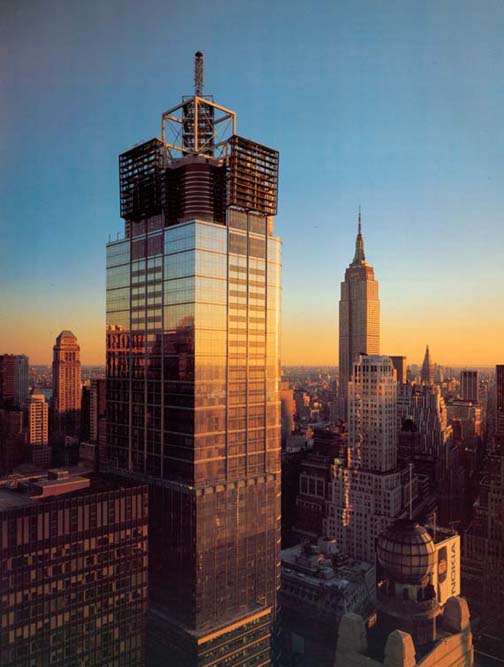Sustainability is defined as the quality of not being harmful to the environment or depleting natural resources, and thereby supporting long-term ecological balance.
One of the most waste-generating industries is that of architecture. Recent technologies have allowed designers and architects to adopt sustainable methods when design buildings. The following are examples of how sustainability is being applied to architecture.
Manitoba Hydro Place
Manitoba Hydro Place is the headquarters building of Manitoba Hydro, the electric power and natural gas utility in the province of Manitoba, Canada. The building's bio-climatic, energy-efficient design features a 115 m tall solar chimney, a geo-thermal heat system, natural air ventilation which provides 100% fresh air all year round, and a one-meter-wide double exterior wall with computer-controlled motorized vents that adjust the building's exterior skin throughout the day and evening. Together, the various elements of the design enable a 70% energy savings over most other buildings.
Namba Parks
Namba Parks is an office and shopping complex located in Osaka, Japan. Built in a former baseball stadium (thus reducing the use of construction materials and waste), it is considered to be one of the most Green areas of Osaka. It consists of ecological features such as waterfalls, trees, lawns and ponds. This makes a difference in comparison to the urban environment surrounding the area.
Condé Nast Building
The Condé Nast Building, officially known as 4 Times Square, is a modern skyscraper in Times Square in Manhattan, New York City. 4 Times Square is one of the most important examples of green design in skyscrapers in the United States. Environmentally friendly gas-fired absorption chillers, along with a high-performing insulating and shading curtain wall, ensure that the building does not need to be heated or cooled for the majority of the year. The building also uses solar technology.
Salesforce Tower
Formerly known as the Transbay Tower, the Salesforce Tower is a 326 m skyscraper under construction in San Francisco. It is a highly sustainable in design, with a rooftop park to absorb CO2, wind turbines and solar panels to generate electricity, 100% natural air ventilation and the ability to capture and recycle rainwater.
References
Achieving Climate Neutrality Through Energy Conservation and Renewable Energy. (2015). [online] Available at: http://www.laccdbuildsgreen.org/docs/energytoolkit/Presentations&Papers/Neutrality_Through_Conservation_and_Renewable_Energy.pdf [Accessed 30 Jan. 2015].
Wikipedia, (2015). Condé Nast Building. [online] Available at: http://en.wikipedia.org/wiki/Cond%C3%A9_Nast_Building [Accessed 30 Jan. 2015].
Wikipedia, (2015). Manitoba Hydro Place. [online] Available at: http://en.wikipedia.org/wiki/Manitoba_Hydro_Place [Accessed 30 Jan. 2015].
Wikipedia, (2015). Namba Parks. [online] Available at: http://en.wikipedia.org/wiki/Namba_Parks [Accessed 30 Jan. 2015].
Wikipedia, (2015). Salesforce Tower. [online] Available at: http://en.wikipedia.org/wiki/Salesforce_Tower [Accessed 30 Jan. 2015].
Wikipedia, (2015). Sustainable design. [online] Available at: http://en.wikipedia.org/wiki/Sustainable_design#Sustainable_architecture [Accessed 30 Jan. 2015].


